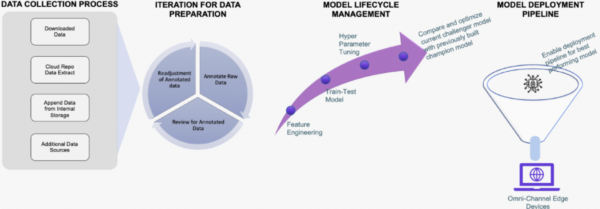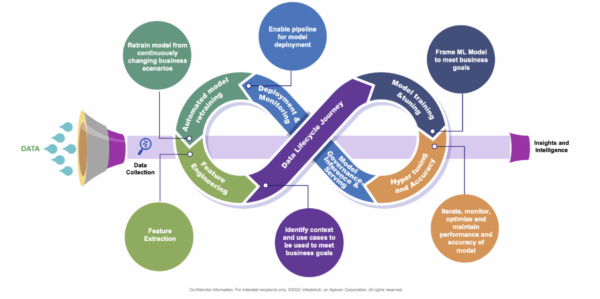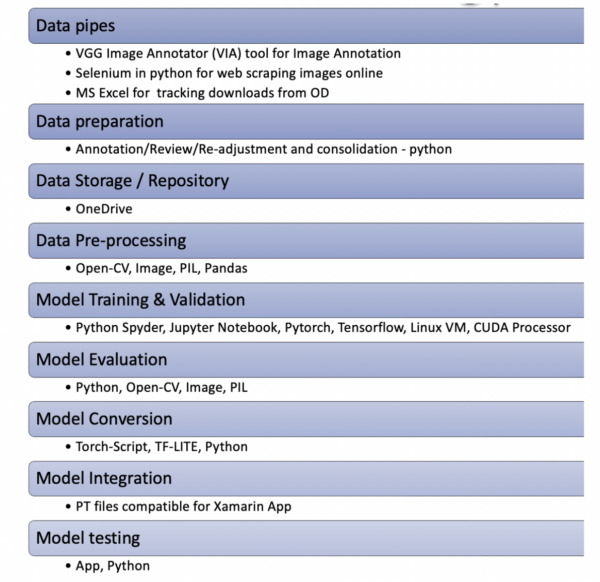

From novelty to necessity, machine learning (ML) has become the most desired technology in every digital transformation initiative across various industries. Learning from data over time, it is an increasingly powerful technology to drive insights from the most complex use cases and scenarios, leading to greater perspicuity. However, most organizations are struggling to address and operationalize some of the complex and discrete use cases using ML partly due to the unstable manual process of deploying the models.
Shortening the analytics development lifecycle is a need for businesses today. To accomplish this, automating some of the repeatable steps in the model deployment is important. Establishing tight collaboration between data scientists (those who own and build the model) and engineers (those one who take this model, package it, and deploy it to the production environment) is necessary.
Let’s quickly explore some of the latest stats relating to ML:
Questions moving forward: What is the best way to enable collaboration between the ML-expert and operation-expert? What are the driving factors for MLOps?
Some thoughts:
Building an MLOps Pipeline
Now that we understand why MLOps is important, let’s look at how we can build one that is efficient and optimal.
At a very high level, MLOps process may consist of the following 4 stages:

When we scale such a process at the enterprise level with several hundred complex use cases consisting of several conditions and scenarios, it is not advisable to enable and apply ML to individual steps in a process. It is important to automate the end-to-end process to bring synergies among elements that are consistent across multiple steps, such as global variable usage, communication protocols, controls, common test cases, and documentation etc.
MLOps practices are primarily designed to focus on building models, tuning, monitoring, validation, and overall governance in productionizing aspects. Therefore, we design each of these steps from build to operationalization of model similar to DevSecOps practices, security, and testing of the overall pipeline. This ensures models are continuously getting updated and hyper-tuned with important business parameters. This MLOps pipeline should be integrated with code repo, webhooks, job schedule portal, runtime logic blocs, data sources, and logging mechanism to produce results like DevSecOps practices; the difference being its model that drives the change as opposed to the application or service.
As shown in the diagram below, MLOps encompasses the continuous learning of the scenarios, experimentation, and iteration to bring maturity in the machine learning lifecycle.

Operationalizing flawless MLOps practices is not as simple as it may sound. As enterprises are struggling to even migrate to the cloud, some are facing challenges while kick-starting their journey towards multi-cloud or even venturing into AI-ML world. MLOps for these organizations may look like an overwhelmingly complex and tedious process.
The following represents some of the shared challenges that organizations face as they go through their digital transformation journeys:
Apexon recommends its time-tested MLOps factory model along with MLOps readiness assessment, approach, and right methodology to address the challenges mentioned above. With all this in place, one can enable MLOps in a matter of weeks, helping to shorten their development cycles, boost deployment velocity, and enable system releases to become auditable and dependable.
Here are some of the best practices for MLOps to help accomplish business goals and objectives:

Value Proposition of MLOPS
Demand for digital engineering services continues to grow according to Zinnov. Being a pure-play digital engineering services firm, Apexon can assist with ML and boost your operational efficiency.
This blog was cowritten by Allan Gonsalves (Solutioning), Dr. Ramyaa (Process and Toolset) and Dipal Patel (Market Research)